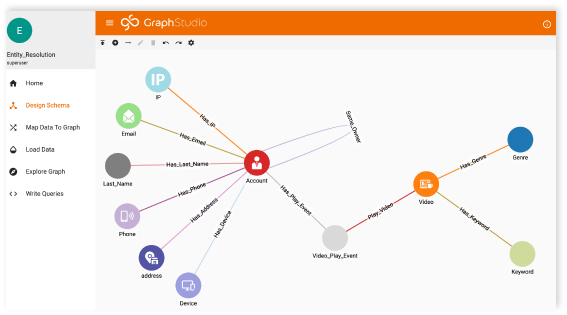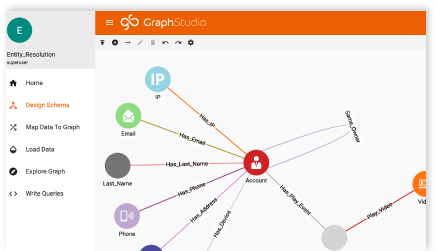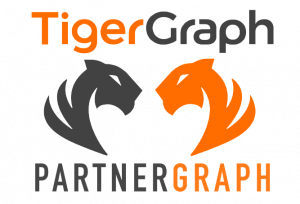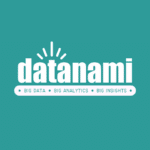The Decade of the Graph: 2021 Illustrates that Graph is entering the mainstream
- Blog >
- The Decade of the Graph: 2021 Illustrates that Graph is entering the mainstream
TigerGraph came out of stealth in 2017, and every year since has been coined “The Year of the Graph” by experts, journalists, and market watchers due to the accelerating momentum. 2018, 2019, and 2020 each had incremental “Year of the Graph” potential. In those years, more and more enterprises adopted graph at scale for increasingly critical applications. Now, just six months into 2021, graph technology companies have attracted more than $450 million in additional funding — and we’re only halfway through the year. Considering the graph market’s continual evolution, growth, and innovation, we think “The Year of the Graph” should be renamed “The Decade of the Graph.” Let’s look at the developments in the last few months to understand this better.
November 2020
Forrester released the Forrester Wave Report for Graph Data Platforms. A tip of our collective hat to Noel Yuhanna, Vice President, Principal Analyst, and his team at Forrester, saw the momentum for Graph and published this detailed research report to help enterprises evaluate various offerings in the Graph technology market.
December 2020
Earlier in 2020, Gartner’s report, “Top Trends in Data and Analytics for 2021” by Rita Sallam, Distinguished VP and Fellow, forecasted the adoption of Graph as a part of data and analytics projects in enterprises. “By 2025, graph technologies will be used in 80% of data and analytics innovations, up from 10% in 2021, facilitating rapid decision making across the enterprise.”
In December 2020, Gartner released the research report titled “Graph steps onto the main stage data and analytics”. Mark Beyer, Distinguished Vice President Analyst at Gartner, weighed in on whether Graph is an essential technology. “To Graph or Not to Graph? That is NOT the Question – You Will Graph.”
January 2021
Neo4j announced the general availability of Neo4j Aura™ Enterprise.
February 2021
In February, TigerGraph announced $105 million in Series C funding, and shortly after, Katana Graph announced $28.5 million in Series A funding.
TigerGraph also hit the ground running in the Asia Pacific (APAC) region and hired our VP, Joe Lee, out of Singapore. Since then, we have been hiring aggressively not only in APAC but around the world.
April 2021
In April, TigerGraph hosted the second Graph + AI Summit with nearly 7,000 attendees, reflecting strong, community-wide interest in learning more about how graph and AI can accelerate analytics. Graph + AI Summit had speakers from JPMorgan, Jaguar Land Rover, Pinterest, Forrester, Accenture, NewDay, Intuit, KPMG, Intel, Dell, IBM, and more technology-first companies. Over 180 companies from the Fortune 500 attended from 74 countries, marking this as the largest and only open graph conference with a worldwide audience.
TigerGraph has been available in the marketplace for all three leading clouds – Amazon’s AWS, Microsoft Azure, and Google Cloud Platform(GCP) for over two years. TigerGraph Cloud, our graph-database-as-a-service, added support for GCP workloads, making it the only distributed graph-database-as-a-service available with a choice of running workloads on AWS, Azure, and GCP.
May 2021
Gartner released the ”Market Guide for Graph Database Management Solutions.” The report predicted that “graph database management solutions (DBMSs) are growing in awareness and popularity as they and their associated tools become more mature.” (Gartner, Market Guide for Graph Database Management Solutions, By Merv Adrian, Afraz Jaffri, Donald Feinberg, May 24, 2021)
June 2021
Earlier this month had multiple milestones, the first being Neo4j’s announcement of a $325 million funding round. We are so excited to see “the largest investment in a private database company” be in the graph space. This round of funding further emphasizes the continuing, explosive growth of graph, and we congratulate Neo4j on this outstanding achievement.
At TigerGraph, we just announced plans to open a center of innovation in San Diego. TigerGraph has deep roots in the area: our CEO, Dr. Yu Xu, and COO, Todd Blaschka, are UC San Diego alumni, and our Chief Technologist, Dr. Alin Deutsch, is a professor in UC San Diego’s Computer Science and Engineering department. The center of innovation will open in Q3 2021 with plans to hire more than 100 professionals for this site.
Also, our TigerGraph team in APAC recently announced that Merkle Science uses TigerGraph to preempt and prevent financial crime. Merkle Science evaluated all available graph vendors and chose TigerGraph for their cryptocurrency network graph, which includes over 2.5 terabytes of data, 5 billion vertices (entities), and 36 billion edges (relationships). And this week, the TigerGraph APAC team announced a multi-year deal with the Australian Taxation Office (ATO). Our market-leading graph technology is helping the ATO reduce tax avoidance by detecting intricate and multi-layered relationships between individuals and organizations.
Building on these exciting developments, the first half of 2021 saw various milestones for the adoption of Graph among customers, partners, and the developer community.
Expanding Graph Use Cases and Partner Ecosystem
As more organizations scale up with graph technology and deploy it into production, we have seen a steady rise in the staple graph use cases – fraud detection, anti-money laundering, entity resolution, and customer 360. It’s wonderful to see new use cases emerge, including improving cancer treatment, finding suspicious activity among crypto-currency transactions, and investigating tax avoidance with higher accuracy.
The partner ecosystem for Graph has expanded to include prominent vendors such as Dell, Xilinx, and Intel driving new analytics and machine learning workloads on optimized hardware. Business data visualization leaders such as Tableau have stepped up to the plate to integrate their products with graphs for combining the two worlds – the world of relational data and the world of connected data or Graphs. All of this means one thing: Graph is mainstream (as in the words of Geoffrey Moore, graph has “crossed the chasm”).
GQL – Graph Query Language Standard
A standard language for querying graph data, GQL, is currently being developed as an ISO/ANSI standard and will be published next year. Remarkably, this is the first ISO query language standard in the circa 40 years since the publication of SQL, which constitutes a powerful testament to the industrial importance of graph data. TigerGraph is one of the active participants in the standardization process, with its language GSQL is one example of influencing the GQL standard.
GSQL’s capabilities go beyond those of GQL, pioneering advanced features such as a novel paradigm for aggregating graph data more flexibly and efficiently than in SQL style (published in an ACM SIGMOD 2019 paper); and a natural way to parallelize query execution (pioneered in an ACM SIGMOD 2021 paper to parallelize even relational SQL queries for significant performance gains).
Graph is reaching the tipping point for broad adoption, and the market is ready for a leader to drive the transformation and business value with Graph.
Who is going to be the Snowflake of Graph? And Why
The size of the investment, the number of players in the graph market, and the case studies of customers with large deployments in production tell us the graph market is mainstream now. This begs the question: who will dominate the market? Who will be the Snowflake of Graph disrupting incumbents and delivering massive business value in a short period of time? In the end, the engineers vote with their time and the buyers vote with their money to make that decision.
What matters in choosing a Graph Database
As you consider the purchase of a graph database, here are the key questions that most buyers work through:
- Where is the graph market going? How should I prepare?
- Will my selected graph database continue to serve my needs now and into the future as the complexity and volume of my data grow? In other words, is my choice or investment future-proof?
- How easy is it to scale out, i.e., distribute the data across multiple machines to avoid adding CPUs or RAM to a single, expensive machine?
- What is the total cost of ownership for the selected graph database considering the initial cost of the license (on-premises) or subscription (cloud-based service), cost of infrastructure, whether physical hardware or cloud resources and cost of maintaining and upgrading my solution?
Here’s a buyer’s guide for graph databases to answer these key questions and help you make this important decision for your organization.
Brad Spiers, Executive Director, JPMorgan Chase leads the Graph initiative for the company and shared the following during Graph + AI Spring 2021 in his keynote – “Graph algorithms scale exponentially, therefore, Graph requires scalable software.” I couldn’t agree more.
Next week, I will share how TigerGraph is born parallel, distributed and high performance, and how no other graph vendor or project is even close to TigerGraph in architecture and performance due to historical and technical limitations. Architecture will be a critical factor for deciding who will be the Snowflake of Graph market. It’s the architecture, guys!
I am looking forward to the decade of Graph, as the technology transforms the enterprise landscape. Welcome to the Age of Graph!










